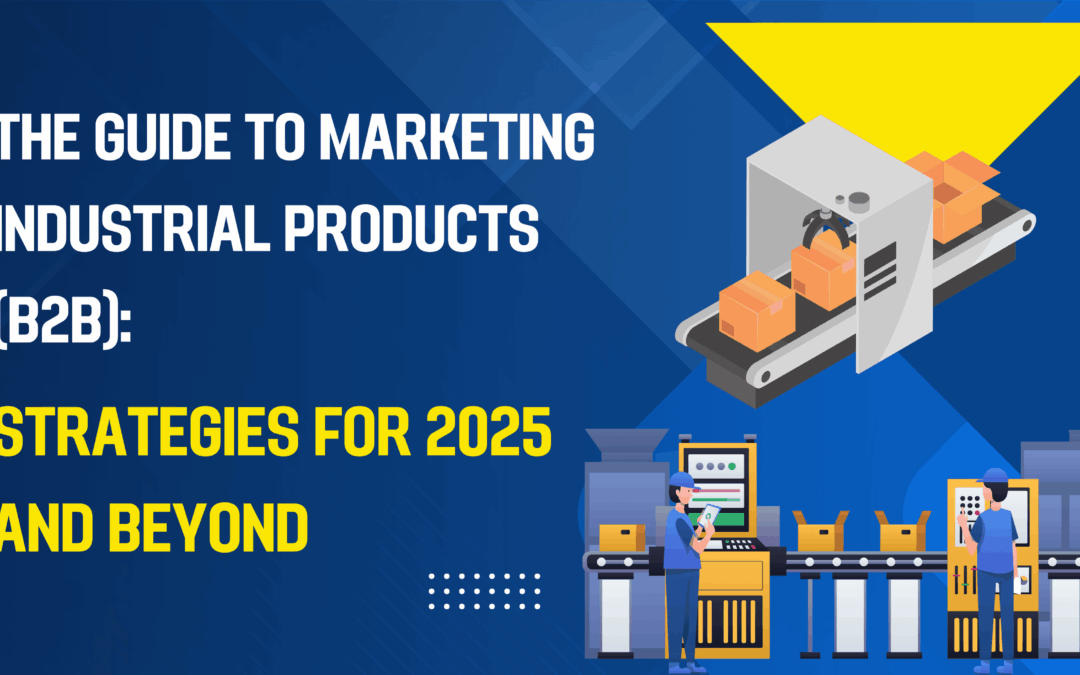Strategies for Marketing Industrial Products (B2B)
Marketing industrial products isn’t about flashy Super Bowl ads or viral TikTok trends. It’s a strategic game of building trust, demonstrating undeniable value, and guiding complex buying committees through a logical journey. If you’re wondering how to break through the noise in sectors like manufacturing, engineering, or construction, this data-backed guide provides a modern blueprint for success.
Why Industrial Marketing is Different?
Before diving into tactics, understand the core principles that set industrial (B2B) marketing apart:
- Rationale, High-Stakes Decisions: A purchase isn’t impulsive. It’s a calculated investment based on ROI, specifications, and risk reduction. A faulty component can shut down a production line, costing thousands per hour.
- The Committee Buys, Not an Individual: Your message must resonate with multiple buyer personas: the engineer (specs), the plant manager (uptime), the CFO (ROI), and the procurement officer (cost & supply chain).
- Long Sales Cycles: Nurturing leads for 6-18 months is standard. Marketing must provide continuous value throughout this journey.
- Relationship-Driven: Trust is the ultimate currency. Your content and interactions must build credibility and position your brand as a reliable partner.
A 4-Phase Framework for Modern Industrial Marketing Success
Phase 1: Lay the Foundation (Know Your Audience & Their Pain Points)
You can’t market effectively without a deep understanding of who you’re talking to.
- Action Step: Create Ideal Customer Profiles (ICPs) and Buyer Personas.
- ICP: *”Mid-to-large automotive parts manufacturers in the Midwest using CNC machining centers over 10 years old.”*
- Persona Example – “Engineering Eric”: A 45-year-old plant engineer who is frustrated with the frequent failure of a specific hydraulic seal, causing unplanned downtime. His goal is to maximize equipment reliability. He values technical data, CAD files, and independent test results.
- Keyword Research: Identify the terms your personas use. Think beyond just product names to problem-based and solution-based queries.
- Example: Instead of just “hydraulic seals,” target “reduce hydraulic cylinder failure,” “improve MTBF on CNC machines,” or “high-temperature seal specs.”
Phase 2: Build Your Digital Hub (Your Website is Your #1 Sales Rep)
Your website is your 24/7 showroom, technical library, and lead generation engine. Optimize it for both Google and your human visitors.
- Technical SEO is Non-Negotiable: Ensure your site is fast, mobile-friendly, and secure (HTTPS). Use schema markup (e.g., Product, FAQ, HowTo) to help search engines understand your content and earn rich snippets.
- Content: Build a dedicated resource hub that guides your audience through every step of their buying journey.
- Awareness Stage (Top of Funnel): Blog posts answering common questions. Example: “5 Signs Your Hydraulic System is Contaminated.”
- Consideration Stage (Middle of Funnel): Gated, high-value content like whitepapers, eBooks, and webinars. Example: “The Ultimate Guide to Extending CNC Machine Lifespan” (requires an email to download).
- Decision Stage (Bottom of Funnel): The most powerful content: Case Studies. Example: “How [Client X] Reduced Downtime by 23% with Our Titanium Seals” – featuring real data and a quote from their plant manager.
- The Goldmine: Technical Assets: Empower engineers by providing instant access to 3D CAD models (STEP, SAT files), detailed product specifications, installation manuals, and certification documents directly on product pages. This dramatically reduces friction for specifiers.
Phase 3: Execute a Multi-Channel Distribution Strategy
Creating great content is not enough. You need to put it in front of the right eyes.
- LinkedIn: The Premier B2B Network
- Strategy: Share your whitepapers, case studies, and blog posts here.
- Example: A LinkedIn post from your company page could say: “Unplanned downtime costing you? See how GasketPro’s latest polymer formulation helped Ace Automotive save $150k annually. Download the full case study here. #Manufacturing #ReliabilityEngineering #Maintenance”
- Email Marketing for Nurturing
- Strategy: Don’t just blast promotions. Build segmented lists and create automated nurture sequences that deliver the right content at the right time.
- Example: When someone downloads your eBook on maintenance, automatically enroll them in a 5-email sequence that introduces case studies, a webinar invitation, and finally, an offer for a free site audit.
- Targeted Paid Advertising (PPC)
- Google Ads: Bid on high-intent, long-tail keywords like “buy high-pressure industrial pump” or “[your product name] specifications.”
- LinkedIn Ads: Use their powerful targeting to show sponsored content to “Plant Managers” in the “Chemical Industry” at companies with “500-1000 employees.”
- The Power of Trade Shows & Events (Online & Offline)
- Strategy: Use events to generate high-quality leads and strengthen relationships.
- Modern Twist: Promote your booth (#1234 at IMTS) weeks in advance using LinkedIn and email. Host a webinar recap after the event for those who couldn’t attend, extending its value.
Phase 4: Align, Analyze, and Adapt
- Sales & Marketing Alignment: Use a shared CRM. Marketing must define what a Marketing Qualified Lead (MQL) is (e.g., someone who downloaded a case study and visited the pricing page) so sales know when to engage.
- Measure What Matters: Track metrics that tie to revenue, not just vanity numbers.
- Key Metrics: MQLs, Cost per Lead, Opportunity Influence, and ultimately, Marketing-Sourced Revenue.
Conclusion: Build Trust, Not Just Buzz
Successful industrial marketing in 2025 is a blend of old-school relationship building and new-school digital strategy. It’s about using SEO and content to attract prospects, providing immense technical value to build trust, and using targeted channels to nurture them until they’re ready to buy.
By focusing on being a helpful, authoritative resource first and a vendor second, you will not only rank higher in Google but also become the preferred choice in the minds of your customers when it’s time to make a decision.

